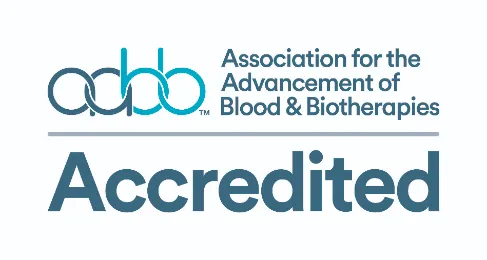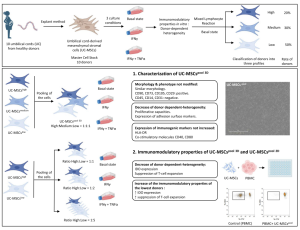News Medical Life Sciences, February 2022
Umbilical cord blood banking is useful due to its role in transplantation. Hematopoietic stem cells (HSCs) possess the ability to reconstitute any blood cell type, offering the potential to treat blood-related malignancies and life-threatening diseases.

Stem cells. Image Credit: Anusorn Nakdee/Shutterstock.com
Cord blood serves as a primary source of these stem cells and the increasing demand to treat malignancies, hemoglobinopathies, metabolic diseases, and immunodeficiencies, over the past decade has prompted the demand for cord blood transplantation. By 2013, >30,000 HSCs have been performed using cord blood, with the majority of them (57%) being used to treat malignancies.
What is cord blood banking?
Cord blood stem cells are collected from the umbilical cord after which the donated cord blood is screened, frozen, and stored in a cord blood bank for the future, subject to meeting screening requirements. The stored cord blood collected from the umbilical cord and placenta following the birth is called the cord blood unit.
Cord blood banking refers to the storage of cord blood units. Approximately 80,000 of these are stored in public cord blood banks and > 5 million are stored in private cord blood banks. Due to research documenting positive clinical outcomes in both malignant and non-malignant disorders, the practice of cord blood transplantation is increasing. Most notably, cord blood transplants possess the ability to overcome Human Leukocyte Antigens (HLAs) barriers compared with nonmatched marrow or peripheral blood HCSTs.
The HLA-limiting problem
HLAs are proteins that determine reactivity against a donor transplant. In sum, six HLA types are implicated in stem cell transplants; in bone marrow transplants, matching between the patient and donor must occur across all six antigens. In cord blood transplants, only 4 out of 6 must match between the donor and patient; this feature is highly attractive particularly for patients from a minority background where donor matches are difficult to obtain
Stem cell transplantation
The cells used in transplants typically come from three sources: the marrow, peripheral blood, and the blood in the umbilical cord. Transplants involving bone marrow required a donor marrow which is retrieved from an HLA match.
In the case of peripheral blood transplants, peripheral blood stem cells present in the circulating blood are used. Typically the bone marrow releases a small number of peripheral blood stem cells into the circulatory system; to obtain adequate numbers of stem cells from this peripheral blood, the donor is subject to treatment to increase the production of these cells, which are then subsequently collected from the blood using a process called apheresis.
Stem cell transplants involving either three of the sources (peripheral blood, marrow, or cord blood), may involve the patient’s stem cells or donor stem cells. When the stem cells are derived from the patient the process is termed autologous transplants. Conversely, those derived donor stem cells are called an allogeneic transplant.
The history of cord blood stem cell transplants
The first successful cord blood stem cell transplant West performed in 1988 and was used to treat a patient with Fanconi anemia.
The advantages of cord blood extend further than HLA matching. These include:
- Availability: code public blood banks contain prescreened, tested, and frozen blood ready to use; conversely there is a waiting period required for allogenic transplants to find a suitable match for peripheral blood donation
- Graft versus host disease (GVHD): The incidence of GVHD is lower and less severe in cord blood recipients relative to bone marrow or peripheral blood transplants
- Cord blood increases the recruitment of donors of minority ethnic backgrounds, thereby increasing the likelihood of a match
The establishment and purpose of cord blood banks
Cold blood cells can be stored at -196 °C and subsequently thawed for use in the clinic. The first five HLA match sibling umbilical cord blood transplants were performed using cord blood stored in a proof of principle blood bank. Cord blood units are capable of 20 years of storage if cryopreserved properly; this does not compromise their biologic characteristics. Due to this long storage time, public organizations and institutions, as well as private companies, opted to set up umbilical cord blood banks.
Umbilical cord blood banking has greatly facilitated the speed with which unrelated donors are identified as compared to alternative sources; the median time to mobilize umbilical cord blood cells for use in the clinic can be as fast as 12 days. By contrast, this is typically 3-4 months for those receiving transplants from unrelated marrow or mobilized peripheral blood donors. This is critical as timing to match is a determinant of treatment outcomes. The number of units required in a bank to satisfy the demand depends on the population; as such, the rate at which umbilical blood cells are mobilized throughout the world varies.
The release rates for private banks are relatively low compared to umbilical blood cord cells stored in public banks. Institutions, government regulatory agents, and multinational organizations are actively involved in determining optimized guidelines that regulate how cord blood cells are collected, processed, and banked. These organizations have subsequently resulted in the formation of registries that validate and evaluate blood cord units that have been mobilized and determined transplant outcomes.
Private vs public cord blood banks
The American Academy of Pediatrics (AAP) revised its 2007 “Cord Blood Banking for Potential Future Transplantation” policy statement in response to the unmet clinical need. This revised policy has prompted several other professional societies across the world to issue similar revisions. The AAP notes that donation of cord blood is preferable to private cord blood banks due to the underuse of cord blood in private banks.
Other professional groups similarly favor the use of public code banking (predominantly based on ethics); these include the International Federation of Gynecology and Obstetrics and the United Kingdom’s Royal College of Obstetricians and Gynaecologists.
Notable exceptions to the preference of public cord banks include occurrences where family members may have a disease that can be treated by cord blood transplantation; the use of family-directed banks typically located in universities or private cord blood banks is therefore preferred.
In Europe, strict guidelines regarding the public collection and use of cord blood in the case of life-threatening illnesses have been advocated for. Most notably, the Italian committee for the proper use of umbilical cord blood noted:
- There is no scientific evidence to support the therapeutic use of autologous cord blood stored for preventative purposes
- Ethical objections to the full profit nature of private blood banks
Nonetheless, private cord blood banks provide a utility when a family member could benefit from cord blood transplantation. Cord blood banking cannot be used autologously (for the donor infant) in children with genetic diseases, because the same disease would be returned with the transplant.

Stem cell transplant. Image Credit: Terelyuk/Shutterstock.com
Case study: The public French cord blood banks network
The French Cord Blood Banks Network (in French, Réseau Français de Sang Placentaire) was established in 1999 to standardize practices controlling the collection, storage, and allocation of umbilical cord blood across national cord blood banks.
In France, cord blood banking is restricted to public banks authorized by the National Health authorities to process units. As such, standardized criteria for cord blood banking have been established and implemented through regular meetings organized by the agency of biomedicine to facilitate communications between quote blood banks, transplant, and maternity wards.
The blood bank network’s recommendations have been altered over time based on the outcomes of transplant data and used as indicators of quality improvement that assess the performance of the network.
In a study describing the results of quality improvement over 10 years, researchers discovered that there was a trend to select units more recently collected with higher cell doses, which facilitated the faster recovery of patients. Overall, these results reflect beneficial clinical outcomes on the strategy of the network.
However, the French Network still faces two key challenges: expanding the diversity of HLA types represented in its storage, and remaining financially sustainable while maintaining improved or maintained standards of quality.
Moreover, the study noted that umbilical cord banks represented an invaluable resource in urgent situations, as illustrated by the COVID-19 epidemics. Over this period, the network experienced an increase of 15% in the number of units deployed.
Despite the relative success of umbilical cord blood banks, there are several knowledge gaps and challenges that remain. These challenges are associated with the umbilical cord blood cells themselves, as well as the regulations surrounding their banking. Currently, ex vivo systems are under development to expand hematopoietic and mesenchymal stem cells, particularly with regards to new approaches for accelerating hematopoietic recovery.
References:
- Rafii H, Ionescu I, Ruggeri A, etal.(2021) Impact of COVID-19 pandemic on the use and release of cord blood units facilitated by the French Cord Blood Banks Network: on behalf of the Agency of Biomedicine, Eurocord and the French Society of Bone Marrow Transplant and Cell Therapy (SFGM-TC). Bone Marrow Transplant. doi: 10.1038/s41409-021-01477-6.
- Harris DT. (2008) Cord blood stem cells: worth the investment. Nat Rev Cancer. doi:10.1038/nrc2418-c2.
- Shearer WT, Lubin BH, Cairo MS, et al.(2017) SECTION ON HEMATOLOGY/ONCOLOGY; SECTION ON ALLERGY AND IMMUNOLOGY. Cord Blood Banking for Potential Future Transplantation. Pediatrics. doi:10.1542/peds.2017-2695
- Leukemia and lymphoma society. Fighting blood cancers. Cord Blood Stem Cell Transplantation. Available at: https://www.lls.org/sites/default/files/file_assets/cordbloodstemcelltransplantation.pdf. Last accessed November 2021.
Source: News Medical Life Sciences








